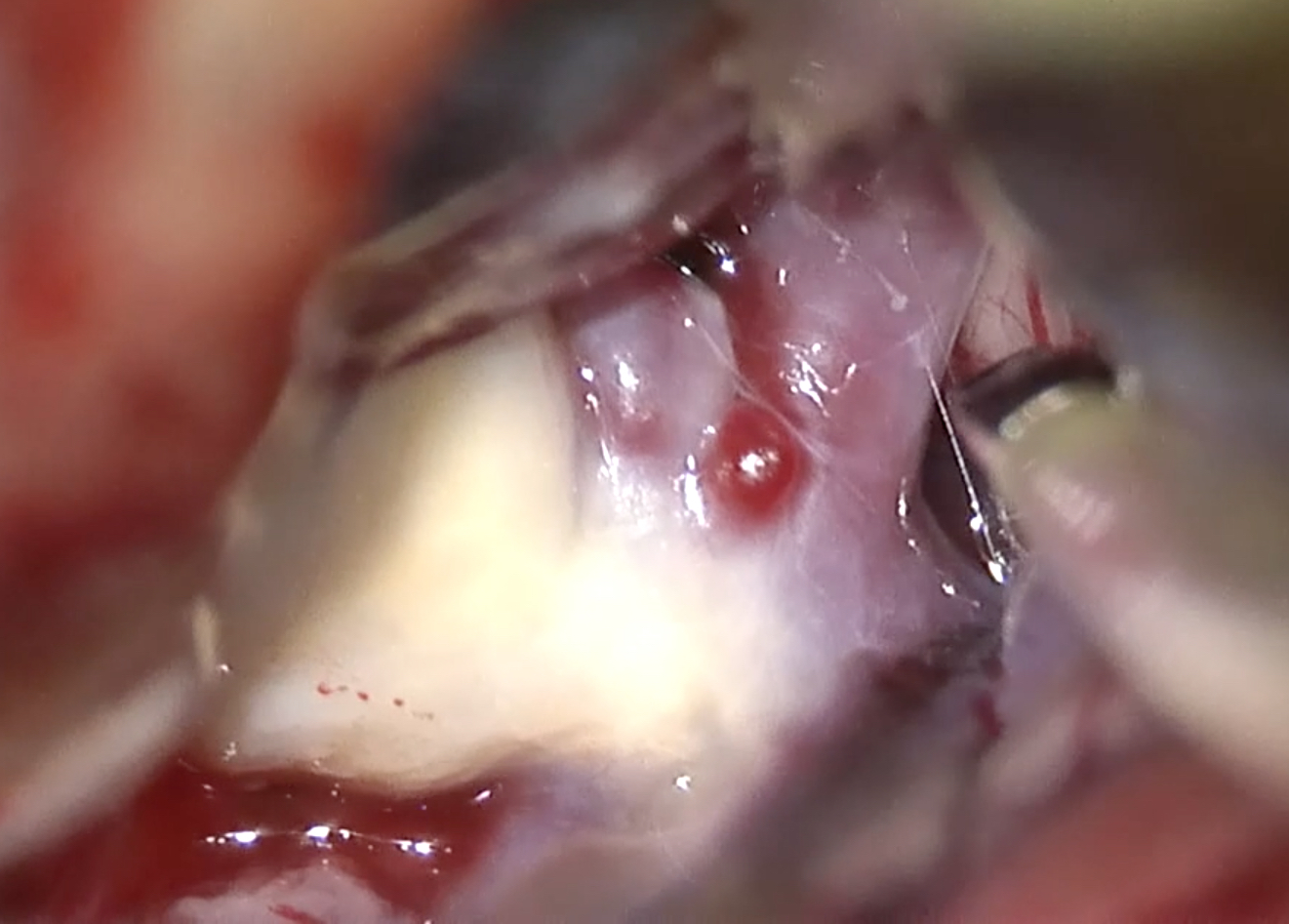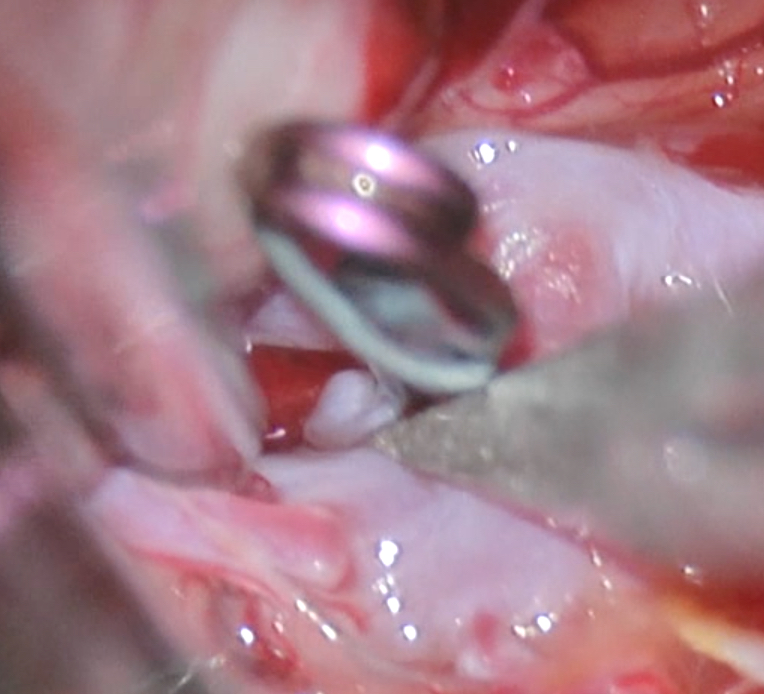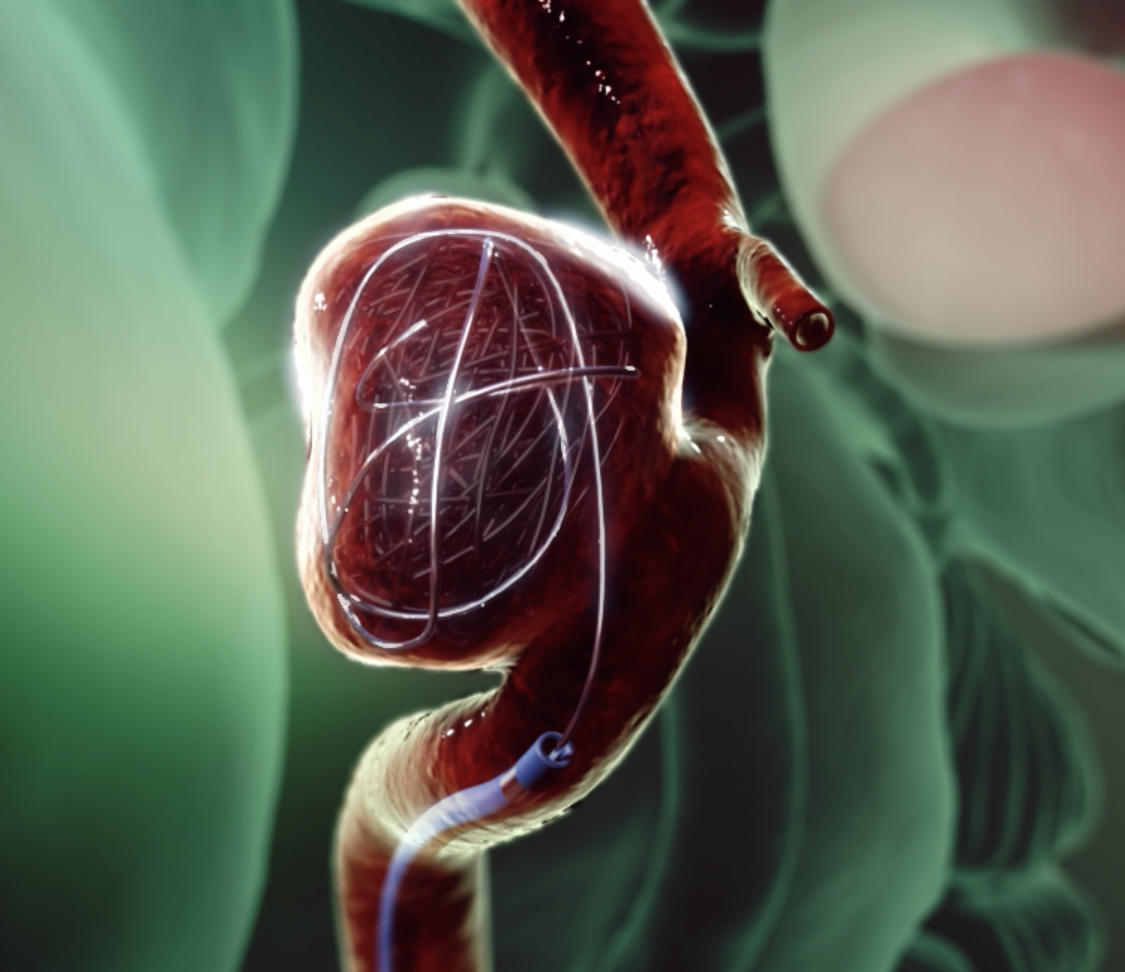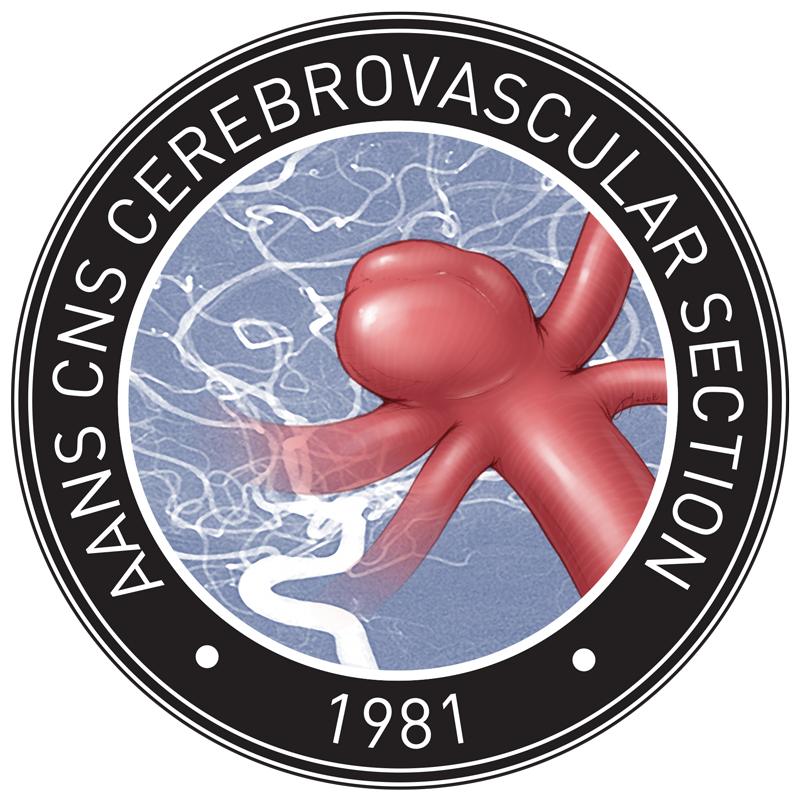Aneurysms
What are aneurysms?
A brain aneurysm is a thin or weak spot on an artery in the brain that balloons or bulges out and fills with blood. The aneurysm may burst and cause life-threatening hemorrhage into the brain. Aneurysms that become very large may press on adjacent nerves or brain tissue and cause symptoms. As many as 1 in 50 people have a brain aneurysm, but most will not rupture or cause any symptoms and are found incidentally (or by accident) during work up of unrelated symptoms (i.e. headache, vision change, memory loss, etc.) or after a trauma. Click for Images

What places people at risk for aneurysms?
A variety of factors can increase the likelihood of developing an aneurysm, including:
- smoking
- high blood pressure
- drug use (particularly cocaine)
- a family history of brain aneurysms
- polycystic kidney disease
- Marfan’s syndrome
- Arteriovenous malformations (also called AVMs)
- certain infections
What are the symptoms of an aneurysm?
Symptoms of unruptured (or intact) aneurysms
Most people with an unruptured brain aneurysm have no symptoms. Others may have symptoms because of aneurysm pressure on the brain or nerves. Symptoms of aneurysm pressure may include:
- numbness
- weakness or paralysis of the face, arm, or leg
- a drooping eyelid
- a dilated pupil
- decreased vision or double vision
- pain above and behind the eye
- localized headache
- seizure
Symptoms of ruptured aneurysms
When a brain aneurysm bursts, it usually causes bleeding in the space between the skull and the brain. This condition is called a subarachnoid hemorrhage (SAH). The rupture often causes sudden, severe headache that patients have described as “the worst headache of my life.” Other possible symptoms are nausea and vomiting, stiff neck, double vision and/or loss of consciousness. If you experience any of these symptoms, call 9-1-1.
What increases the risk of an aneurysm rupture?
The most accurate assessment of bleeding risk requires formal evaluation by a physician specializing in brain aneurysms; however, common risk factors of aneurysm rupture include:
- large aneurysm size
- irregular aneurysm appearance
- a history of aneurysm rupture
- active tobacco smoking
- uncontrolled high blood pressure
- use of stimulant drugs (e.g., cocaine, methamphetamines)
- heavy alcohol use
What can happen when a brain aneurysm ruptures?
Aneurysm rupture is a serious, often life-threatening event. The initial bleeding often causes serious brain injury or even death. In addition, patients with a ruptured brain aneurysm are at risk for complications including hydrocephalus, cerebral vasospasm and other medical complications.
Hydrocephalus is an excessive buildup of cerebrospinal fluid that puts pressure on the brain. It is typically treated with a ventriculostomy — a bedside procedure in which a small tube is placed in the brain to drain the cerebrospinal fluid. Some patients may ultimately need a permanent drainage tube called a shunt.
Cerebral vasospasm is an abnormal narrowing of brain blood vessels that can reduce blood flow to the brain and cause a stroke. This condition is treated with medications and sometimes procedures designed to open up the narrowed blood vessel.
Medical complications that often follow aneurysm rupture include:
- pneumonia
- blood infections
- bladder or kidney infections
- injury to the heart and blood clots in the legs or lungs
- other medical conditions
Doctors and nurses in our specialized neuro-intensive care unit take numerous measures to prevent or treat such complications. Though aneurysm rupture is a major illness with numerous potential complications, the Stroke and Cerebrovascular Center’s multidisciplinary, compassionate and dedicated approach to patient care commonly results in improved communication and improved long-term outcomes.
Diagnostic Imaging Techniques for Aneurysms
Accurate diagnosis and detailed visual information about a patient’s aneurysm is radiographic imaging studies. The advanced imaging techniques, selected according to each patient’s situation, are computed tomographic imaging (CT) and angiography (CTA), magnetic resonance imaging (MRI) and angiography (MRA), and angiogram/arteriogram.
Computed Tomographic Imaging (CT) and Angiography (CTA)
This noninvasive imaging technique requires lying very still on your back in a tubular machine that uses X-rays and a special dye injected through an IV in your arm to look closely at blood vessels in the brain.
Magnetic Resonance Imaging (MRI) and Magnetic Resonance Angiography (MRA)
Additional noninvasive tools, MRI and MRA imaging also require lying face up and motionless in a tube-shaped machine that uses magnetic fields and a special dye injected through an IV in the arm to look closely at the blood vessels of the brain.
Angiogram/Arteriogram
An angiogram is the most sensitive imaging test for identifying and monitoring aneurysms. For this imaging technique, the patient is sedated and a small area of the body — typically the groin — is numbed. Then a physician inserts a small tube called a catheter into a blood vessel and threads it up to the neck and brain. A contrast dye is injected so that X-rays can reveal all arteries and any abnormalities. When the angiogram is over, the patient remains in the hospital, lying flat, for two to six hours to help prevent complications. The length of time each patient remains lying down depends on the type of closure used and on the particular patient.
Treatment Options
If an unruptured brain aneurysm remains small, it may pose little risk and may only need routine observation. On the other hand, if a brain aneurysm is larger, has other high-risk features, or has ruptured, treatment via either surgical clipping or endovascular embolization may be necessary. Both treatment options have risks and benefits. Some people are best treated with open surgery and others with endovascular methods. The factors that we use to help make these decisions include your overall health and age as well as features of the aneurysm that might make one method easier, safer, or more effective than another.
Microsurgical clipping
In this procedure, which is performed under general anesthesia, the neurosurgeon removes a section of the skull and then uses a microscope to locate the artery connected to the aneurysm. At that point, a small permanent clip made of titanium (a strong, lightweight non-ferromagnetic metal and is MRI safe up to 3.0 Tesla) is placed at the aneurysm’s neck, stopping its blood supply and preventing it from bleeding. (Figure or short video clip for aneurysm clipping) In a small number of difficult aneurysms, the neurosurgeon may need to clamp off the entire artery leading to the aneurysm to stop its blood flow and cure the aneurysm. In this case, a bypass procedure (Figure for bypass) may be required to re-route blood to vital areas of the brain.
There are several unique and specialized techniques to optimize the safety and effectiveness of aneurysm surgery, including intra-operative neuro-physiological monitoring, and routinely use intra-operative fluorescent or catheter angiography to confirm complete aneurysm repair and the preservation of the normal arteries.

Endovascular Treatment
Endovascular techniques are done from inside the blood vessels using small devices. These procedures also need to be done under general anesthesia. A small plastic tube is placed into the artery, usually in the groin, and then guided using X-rays into the arteries of the neck. Using the hollow tubes, platinum coils are placed into the aneurysm and fill it up from the inside. Sometimes metal mesh tubes (stents or so-called blood flow diverting device) are used to help treat the aneurysm.

Recovery and Follow-up
Neuro-Intensive Care Unit
Treatment of brain aneurysms, ruptured or not, often requires admission to the neuro-intensive care unit that provides superior monitoring and advanced life support. Intensive care doctors coordinate the patient’s care with a team of specialists that includes:
- neurosurgeons
- interventional neuroradiologists
- nurse practitioners and nurses
- respiratory, physical and occupational therapists
- pharmacists
- dieticians
- social workers
- pastoral care providers
Neuro-Step-Down Unit and Floor
Following your procedure and your stay in the neuro intensive care unit, if needed, you may be monitored and cared for on the neurological step-down unit and floor. Here, specially trained nurses, therapists, dieticians and social workers can help with your recovery and with your transition to home.
The Rehabilitation Facility
Following your hospitalization you may require rehabilitation before being ready to return home. The social worker and case manager will help arrange this placement based on your needs and those of your family.
For Aneurysms Requiring No Immediate Treatment
Untreated aneurysms that have no symptoms often require lifelong periodic imaging to rule out any enlargement or progression. Significant aneurysm growth may be a sign of an unstable aneurysm that could require surgical or endovascular treatment.
Clinic Visits For Aneurysms Already Treated
Recently treated aneurysms will require several follow-up clinic appointments over the course of six months to one year for monitoring. Frequently, long-term final imaging is performed to confirm that a treated aneurysm is stable.
Online resources for patients
The Brain Aneurysm Foundation:
Brain Aneurysm Resources:
National Institutes of Health cerebral aneurysm web site:
www.ninds.nih.gov/disorders/cerebral_aneurysm/detail_cerebral_aneurysm.htm
